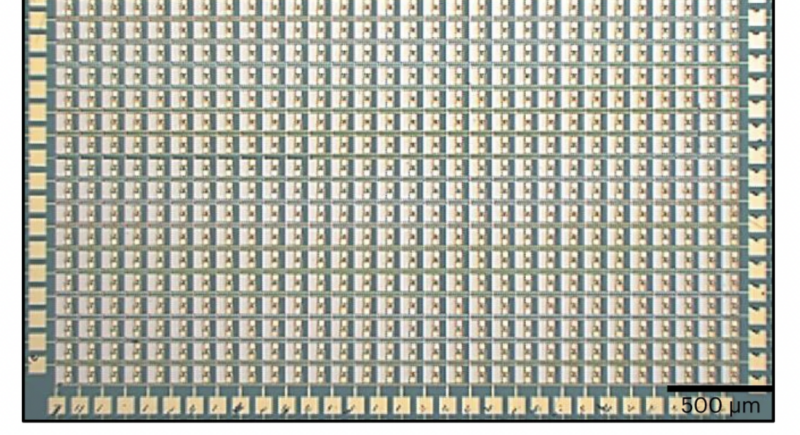
Since the isolation of graphene, we've identified a number of materials that form atomically thin sheets. Like graphene, some of these sheets are made of a single element; others form from chemicals where the atomic bonds naturally create a sheet-like structure. Many of these materials have distinct properties. While graphene is an excellent conductor of electricity, a number of others are semiconductors. And it's possible to tune their properties further based on how you arrange the layers of a multi-sheet stack.
Given all those options, it shouldn't surprise anyone that researchers have figured out how to make electronics out of these materials, including flash memory and the smallest transistors ever made, by some measures. Most of these, however, are demonstrations of the ability to make the hardware—they're not integrated into a useful device. But a team of researchers has now demonstrated that it's possible to go beyond simple demonstrations by building a 900-pixel imaging sensor using an atomically thin material.
Making pictures
Most image sensors currently consist of standard silicon semiconductors, manufactured using the usual complementary metal–oxide semiconductor (CMOS) processes. But it's possible to replace the silicon with another semiconductor. In this case, the researchers used molybdenum disulfide, an atomically thin material that has seen a lot of use in experimental devices.
To use this in a device, the researchers started by growing a single-layer sheet of molybdenum disulfide on a sapphire substrate using vapor deposition. It was then lifted off the sapphire and lowered onto a previously made silicon dioxide surface that already had some wiring etched into it. Further wiring was then deposited on top.
The end result of this process was a 30 by 30 grid of devices, where each device consists of a source and drain electrode connected by a sheet of molybdenum disulfide. When illuminated, each of these devices would pick up stray charges, which would affect their ability to transmit current between the source and drain electrodes. That difference in resistance provides a measure of how much light the device was exposed to, allowing image information to be reconstructed.
While the charges that build up after exposure to light will disappear slowly on their own, most devices actively clear them out by applying a strong voltage between the source and drain electrodes.
Good and bad
In comparing this to a standard silicon sensor, it's a bit of a mixed story: better in some ways, notably worse in others. On the good side, the devices require remarkably little power to operate; the researchers estimate that it takes less than a picoJoule per pixel during operations. Resetting the device remains a simple process of applying a large voltage difference across the molybdenum disulfide sheet.
The researchers found that applying a much smaller voltage across the molybdenum disulfide could sensitize it to light. This allows a simple adjustment of the signal-to-noise sensitivity of the image sensors while in operation. Normally, this requires a fair amount of external circuitry on silicon-based imaging hardware, with a corresponding increase in manufacturing complexity and power use during imaging. So, this device offers a couple of advantages.
What it doesn't offer is speed. While the initial response to light can be registered in as little as 100 nanoseconds, a full, high-contrast exposure takes seconds—per color. So, a blue exposure takes over two seconds, and the red channel needs nearly 10 seconds for a full exposure. So, don't expect to use this to grab some quick videos on your cell phone.
Of course, this doesn't mean it's useless; it just limits what it's useful for. There are plenty of applications where power is a more significant constraint than time, such as environmental sensors and the like (the people who developed it are excited about IoT applications). But the bigger story here may be that the researchers built a fairly large, complicated device that relies on atomically thin material.
Nature Materials, 2022. DOI: 10.1038/s41563-022-01398-9 (About DOIs).


3175x175(CURRENT).thumb.jpg.b05acc060982b36f5891ba728e6d953c.jpg)

Recommended Comments
There are no comments to display.
Join the conversation
You can post now and register later. If you have an account, sign in now to post with your account.
Note: Your post will require moderator approval before it will be visible.